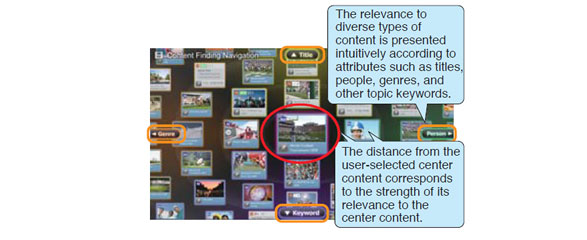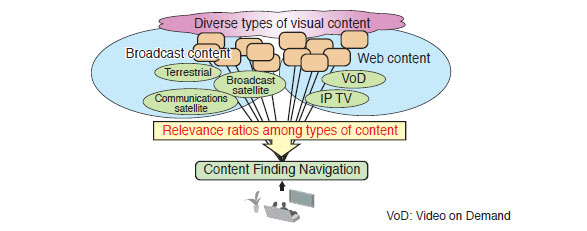- Back to the previous page
- Information & Communication Platform
“Content Finding Navigation” Content-Centric User Interface
Users can
become
overwhelmed by
the vast amounts
of visual contents
available from
various sources
including digital
terrestrial and
satellite broadcasting, IP TV, and much more. Toshiba
has developed a content-centric user interface called
“Content Finding Navigation” that allows the user to
swiftly discover the types of content corresponding to his
or her interests in this ocean of visual contents. In order to
offer seamless access to diverse types of broadcast media
content, Content Finding Navigation provides a unified
graphical user interface (GUI) based on relevance ratios
among types of content. The relevance ratios of diverse
types of content are calculated based on attributes such as
titles, casts, categories, and other topic keywords.
Diverse types of media content are arranged in a threedimensional
(3D) space based on their relevance ratios,
as shown in the upper figure. The distance between the
user-selected center content and the other types of content
corresponds to the strength of the relevance ratio. The
direction between the user-selected center content and the
other types of content represents reasoning attributes such
as titles, people, genres, and other topic keywords. For
example, content that is relevant to a cast member rather
than other attributes is located in the direction of “Person.”
This swift guidance interface based on the relevance
ratios among types of content allows faster and
easier access to the types of target content of interest.
Furthermore, the user can discover types of content
with the same cast or the same title that are scheduled
to be rebroadcast. We intend to apply Content Finding
Navigation to PCs and TVs as a unified GUI to support
users’ discovery of targeted contents.

Screen image of Content Finding Navigation

Concept of content-centric user interface


